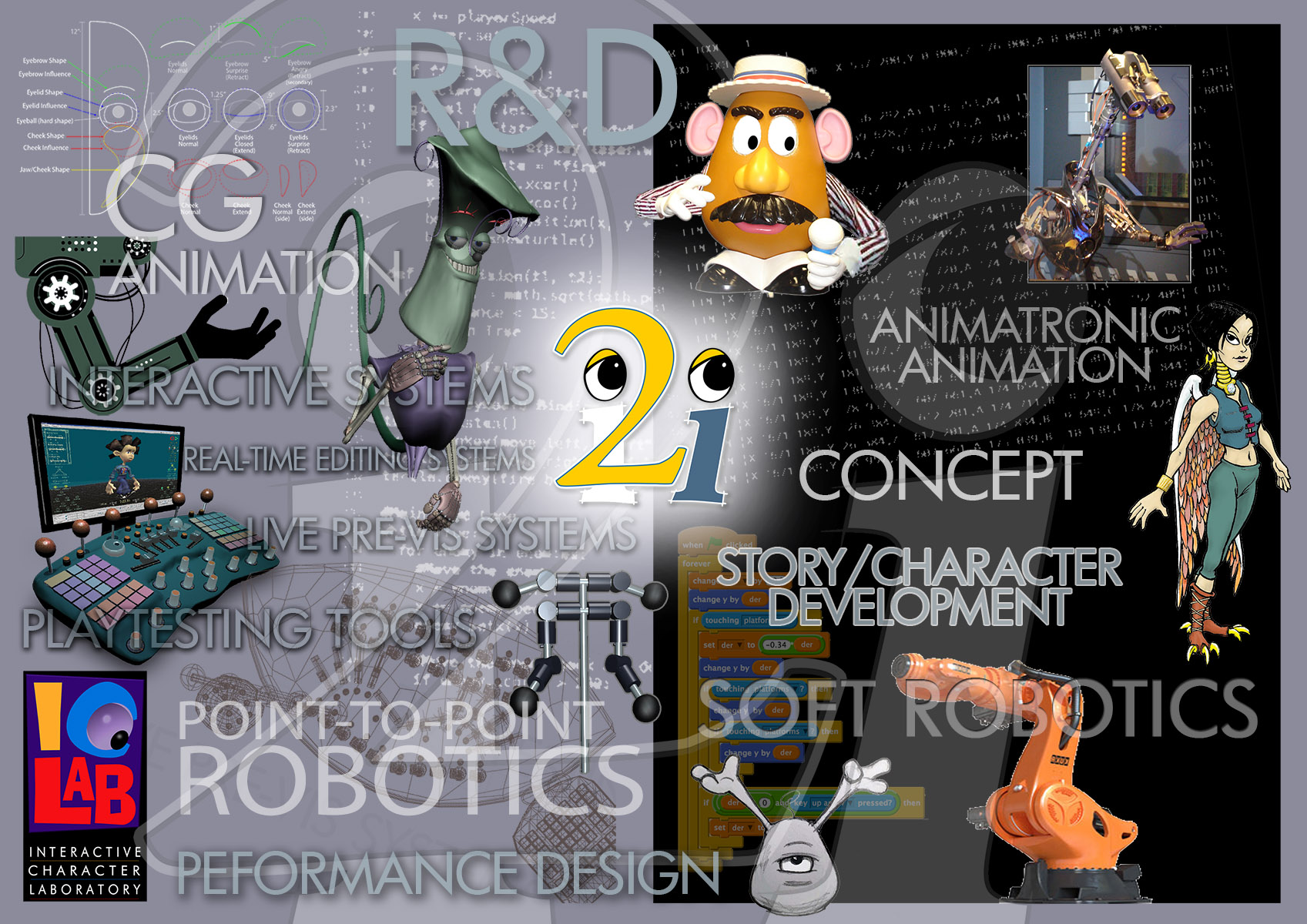On the Game Animation page of this site I labeled this approach to animation control as 'Behavioral Animation'. Although applications in the Game and Film industry are somewhat different, the underlying concepts and objectives are the same - to represent performance animation in a form that is compatible with automation without losing effective animation editing.
My interest in this subject began a little over 20 years ago as I was supporting an entertainment project that included a character that was both able to walk and had traditional animatronic character performance features. A big takeaway from that project was that the mobility processing and character performance playback were essentially fighting each other - both had to be de-tuned significantly to get the overall system to behave.
This seemed like a fundamental hurdle to overcome in order to make significant progress in 'hybrid' robotics - whether the term 'hybrid' applies to the convergence of industrial robotics and entertainment, or mobility control with character animation. In the years since, I've focused mostly on theme park animatronics and game development, but have been looking for an opportunity to pursue a solution to this 'two-brain' problem.
While amazing advancements have been made since, and there are many examples of mobile robots moving in aesthetically beautiful and interesting ways, my impression is that actual integration of those two processes continues to be an issue - and an opportunity. I expect that not having fully adressed how to efficiently integrate aesthetic and automated data generation and processing still impedes development advancement in certain areas. I would love to help create a path...

